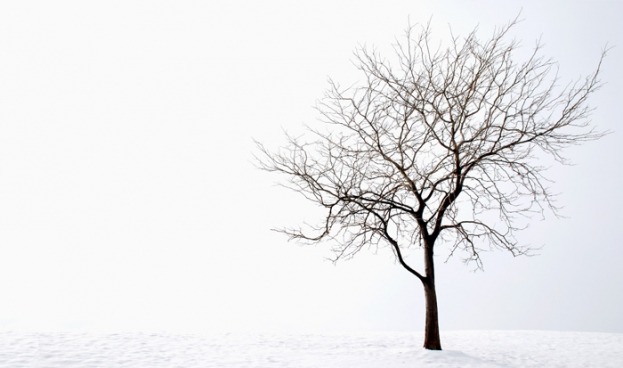“In November, the trees are standing all sticks and bones. Without their leaves, how lovely they are, spreading their arms like dancers. They know it is time to be still.” ― Cynthia Rylant
For many of us, the end of November is littered with tall yard bags bulging with dry, brittle leaves. The heavy-laden bags are set out at the curb and picked up by big trucks in the early morning. We dust off our hands and heave a sigh of relief mixed with sadness. It's over. The brilliance of fall waves goodbye in windy gusts of brown detritus. Nature now transitions—with a decided edge of melancholy—to ever-colder, darker days, culminating in the Winter Solstice.
The attenuated light seems to mirror our declining hopes for holidays-as-usual. In fact, this year will be quite different. We feel that instinctive need for family and friends more than ever this year because it has been, by all accounts, a tough year; yet, we know that to have loved ones outside the home around us now would be to perpetuate the virus and endanger everyone's lives. Oh, the injustice of it all! But our cries get no sympathy from COVID-19.
When we feel leafless and cold and lonely for physical human contact—hugs and handshakes now shadowy images of a lost world—we can turn to the wisdom of trees. They are, indeed, wise teachers who stand ready for someone to take notice, to touch them—and yes, to hug them, too.
In winter, deciduous trees stretch out their bare, spindly limbs as if reaching out to touch us in our isolation. As if they understand. The spikey branches frozen against steel gray skies speak to us of stillness. While the lush and stately evergreens (who look particularly fetching in snow) may look down their noses at their naked counterparts, the leafless trees do not take offense. They are rooted in a deep restfulness, a quiet confidence born of a tender touch of divinity. They know that divinity within them to be perpetually awake, alive, and flowing like sap in the deepest of winters.
These trees are not angry with the universe or singing sad ballads of lost summers. They simply embrace the season they are in. They live by faith, these trees of winter, trusting in the promise of spring when all the world will surely bourgeon again, as it always has, with giddy green aliveness.
Perhaps if we pay attention to these unclothed tree companions, they will reveal their secret: how they wait and endure and stand tall and strong in the worst of conditions. How they know when to let go. How they reach up and feather out toward a sky filled with endless permutations of invisible grace.
With a little help from our tree friends, we can learn how to transform these holidays into actual holy days. Not separated from others, but "set apart" for wonder, for stillness— for nature's voice to speak to us of God and beauty and our deep roots in the earth. We can spend this winter in wonder, catching hold of the many images of incarnation we never noticed before.
Then, like tapping the sweet sap of the Maple tree, we can tap into the divinity that flows within us, too—that tender presence that yearns for our attention and love. If we offer ourselves, whole, raw, and vulnerable, we will discover a never-ending unfolding of our true selves— not isolated souls, but all wild and tangled together at the roots with the rest of creation.
And so, during this season of Advent, a season of waiting in the dark, lamenting, and giving thanks, we may just find that we are more alive, more connected, and more aware of our belonging in the larger web of creation than ever before.
Just grab a jacket, step outside, and find a companionable tree: a giver of wisdom; a holder of divinity.

 When All the Leaves Are Gone
When All the Leaves Are Gone